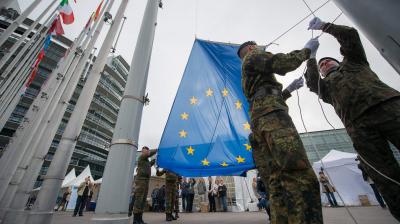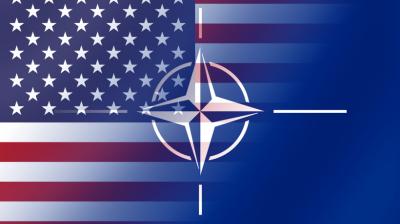The 2018 NATO Summit: the burden of transatlantic burden-sharing
When European political leaders gather for the NATO Summit in Brussels on 11-12 July, US president Donald Trump will confront them with a very simple question: when will you spend 2 percent of your GDP on defence? At the Wales Summit in 2014 all NATO countries signed up to realising this target by 2024. The good news is that the number of Allies meeting that target has already increased from three in 2014 to eight today, while another seven Allies have promised to reach the 2 percent by 2024. The bad news is that another fourteen NATO countries will undoubtedly break their promise, even if most of them are unlikely to say so openly. Some ‘bad performers’ will state in carefully chosen diplomatic wording that they will continue their efforts to increase the defence budget further in the direction of 2 percent GDP by 2024, while fully aware that this will not happen.
The Netherlands could opt for this approach too. Despite the increased defence expenditure under prime minister Mark Rutte’s third consecutive government, the country will spend around 1.3 percent of GDP on defence by 2020. In order to reach the 2 percent target in the following four years the defence budget would have to rise by some 70 percent. This will not happen, both for political and financial reasons, but also because the armed forces would not be able to absorb such large increases in such a short timeframe. Other Allies might be more blunt and open in presenting their case. In fact, two countries have already announced their alternatives to the Wales target: Germany will increase its defence budget from currently 1.2 to 1.5 percent GNP by 2024. Belgium, now almost at the bottom of the NATO ranking spending just 0.9 percent GNP, aims to reach the 1.3 percent mark by 2030.
"Looking at Trump’s behaviour on other subjects – such as trade and migration – one can foresee the active use of his Twitter account"
President Trump is not likely to be impressed. After his meeting with NATO Secretary General Jens Stoltenberg on 17 May he said that bad performers “will be dealt with”. What this implies remains unclear, but looking at Trump’s behaviour on other subjects – such as trade and migration – one can foresee the active use of his Twitter account. He might shoot verbally at countries like Belgium, Germany, the Netherlands or others. Clearly, this is not the best way to show the strength and cohesion of the NATO Alliance, in particular versus Russia. But Trump will not shy away from bullying European countries, even if that is detrimental to NATO. He will simply argue that the Alliance is kept strong by the countries performing well, such as the US, the United Kingdom, the Baltic States and Poland. The bad performers will be singled out and depicted as those endangering NATO’s cohesion. They will have to step up their efforts to strengthen Alliance cohesion and solidarity, so The Donald will argue.
The focus on burden-sharing at the NATO Summit places an enormous burden on the shoulders of all Allied political leaders. NATO Secretary General Jens Stoltenberg is well aware of the risks involved. He has been travelling to many capitals – including Washington DC – to prepare Allied leadership for the upcoming Summit. During these visits he has consistently stated that European Allies are increasing their defence budgets by pointing, for example, to the average growth percentage of all Allied budgets of 4.9 percent in 2017. On the other hand, he has also been outspoken in capitals like Berlin and The Hague by stressing that more is needed than is currently being planned for. But this ‘damage limitation’ effort – which is the logical thing to do for any SecGen of NATO – will have little or no value if Trump uses his press moments and Twitter account to pick on the bad performers. What can they do in return, aside from acknowledging that they have to do more? There are at least three issues that might be of use to counter Trump’s two-percent bashing.
- Talk about output instead of input. Spending more on defence does not automatically lead to better defence capabilities. It has to be spent on the right things and it must contribute to reinforcing NATO’s deterrence and defence posture. Also, NATO Allies should preferably improve their military capabilities together in order to increase standardisation and interoperability. Greece has been living up to the 2 percent target for a long time. Yet, the country has a very poor record for participating in NATO operations. In essence, its defence is solely based on national interests, not on Allied solidarity. Germany’s defence plan foresees in the construction of a capable force, based on the so-called Framework Nation Concept, in the 2020s. Mechanised brigades from Allies such as the Czech Republic and the Netherlands have been hooked up to German divisions, which themselves will receive more modern armoured vehicles.As each of the three division headquarters will be able to command five brigades the ultimate result could be a 15 armoured brigade strong force. This will act as a core for NATO’s follow-on forces to back up the small forward deployed battalions in the Baltics and Poland as well as the rapidly deployable but lightly equipped NATO Response Force. Such a pitch could help to convince The Donald that some countries that fail to meet the 2 percent input norm are actually doing better in terms of output than others that do live up to the financial target.
- Point to contributions in the fight against terrorism. One of Trump’s pleas has been to further enhance the role of NATO in the fight against terrorism. In other words, the Alliance has to step up its operations in the Middle East. Many European countries can point to their past and current efforts in that respect, and the cost in terms of blood and treasure. Denmark – with a defence budget accounting for 1.2 percent GDP – had the highest fatality rate per capita of all NATO Allies during the ISAF operation (Afghanistan). With 1,300 deployed military forces, Germany is right now the number two troop provider in the Allied Resolute Support training mission in the same country. Many Allies have expressed their intention to step up their contribution in Afghanistan, including with Special Forces – such as the Netherlands. Besides, Belgium, Denmark and the Netherlands have all participated in the air campaign against the Islamic State in the coalition under US leadership. Trump, who is not known to read detailed notes and reports, might not be aware of all these efforts.
- Mention the transatlantic arms trade flow. Trump has complained about trade imbalances with Europe, for example with Germany in the automotive area. But when it comes to the arms trade, the picture is very different. US military equipment is widely exported to Europe, in particular in the aerospace sector (think of fighter aircraft such as the F-16 and now the F-35; transport and armed helicopters; unmanned reconnaissance platforms). In return, very little military equipment is exported to the US from Europe, in particular as the Buy American Act obliges the Pentagon to procure American weapon systems. The result is a transatlantic arms trade imbalance which strongly favours the US defence industry. Mentioning this fact might help to convince Trump that the US is in fact profiting from defence cooperation with Europe.
"European countries with good track records on military output should present the relevant facts more proactively."
To conclude, European Allies not living up to the Wales two-percent pledge should not shy away from admitting their guilt. In 2014, they signed up to the target at the highest political level. Therefore, they should do better. So President Trump is right to call them out. Unfortunately, Donald The Unpredictable can endanger Allied cohesion if he names and shames bad performers. If so, damage limitation will be the immediate response, but European countries with good track records on military output should present the relevant facts more proactively. After all, the right amount of financial input is needed, but what counts at the end of the day is military output that serves NATO’s core tasks and contributes to the Alliance’s security.





